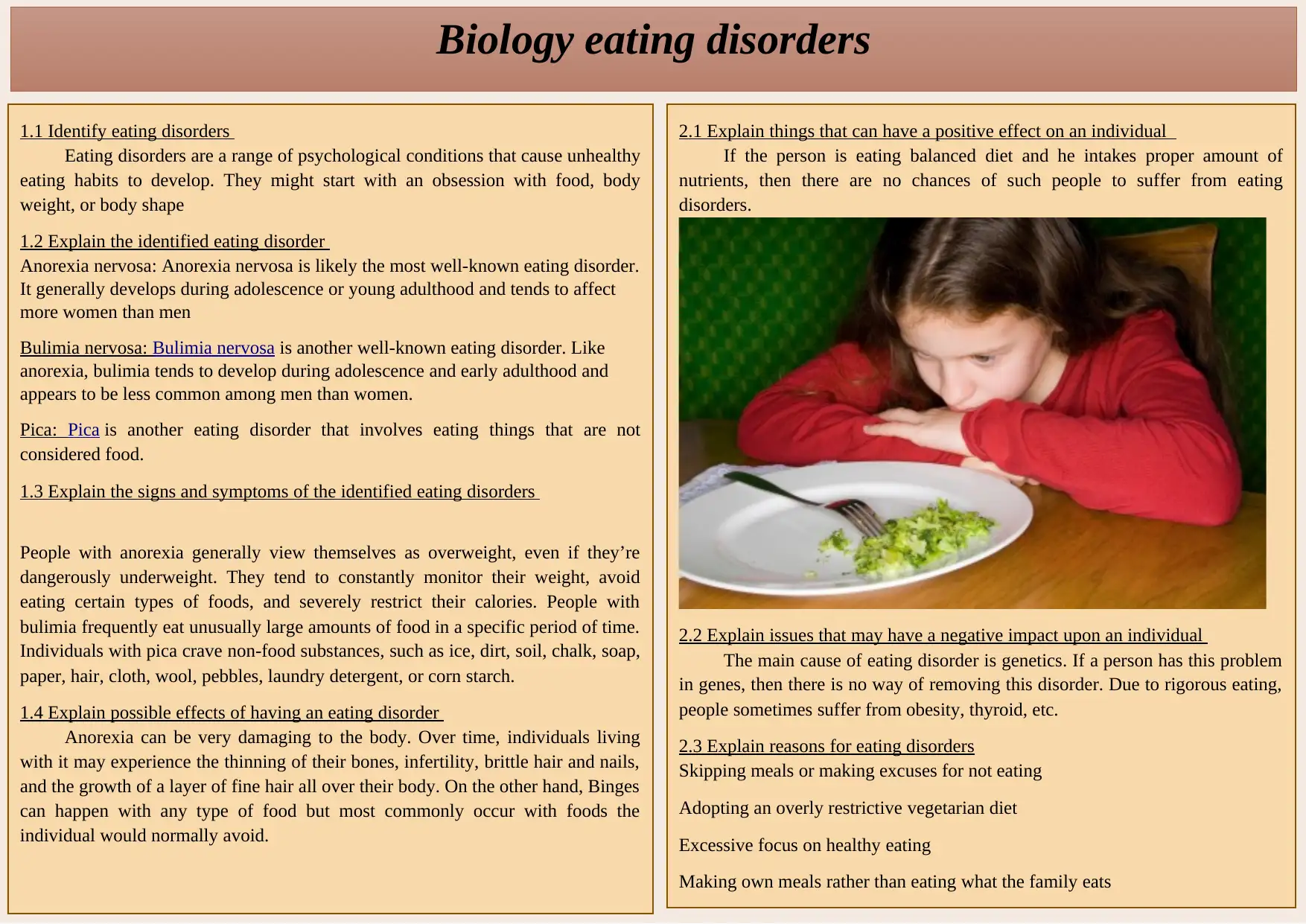Exploring Eating Disorders: Anorexia, Bulimia, and Pica in Biology
VerifiedAdded on 2023/01/18
|1
|439
|60
Homework Assignment
AI Summary
This biology assignment delves into the realm of eating disorders, specifically focusing on anorexia nervosa, bulimia nervosa, and pica. It begins by defining eating disorders as psychological conditions impacting eating habits and then explains the potential positive impacts of a balanced diet and proper nutrient intake. The assignment details the characteristics of each disorder, including symptoms such as excessive weight monitoring, food restriction in anorexia, binge eating in bulimia, and the consumption of non-food items in pica. It further explores the physical and psychological effects of these disorders, such as bone thinning, infertility, and the development of fine hair in anorexia, and discusses the potential negative impacts, including genetic predispositions and related health issues like obesity and thyroid problems. The assignment also identifies behavioral signs of eating disorders, such as meal skipping, restrictive diets, and excessive focus on healthy eating, providing a comprehensive overview of these complex conditions.







![[object Object]](/_next/static/media/star-bottom.7253800d.svg)